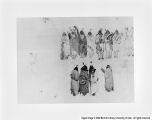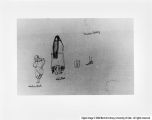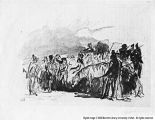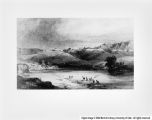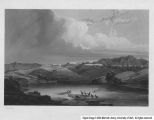| OCR Text |
Show 105 to succeed both as a source of scientific information and as superlative examples of nineteenth-century travelbook illustration. It was through the multiple copies of the prints-and the even more numerous reproductions of the aquatints in popular books and magazines--that entire generations in Europe and America would know the Plains Indians and their world.34 A Travelbook Landscape: Proof State of Tableau 37 The images Bodmer chose to reproduce for Travels fit comfortably into the well-established European travelbook genre. The relationship between the aquatints used for Travels and the flourishing travelbook industry can be defined through an examination of Bodmer's landscapes, since they were so typical of travelbook illustration as a whole. The development of Tableau 37, The White Castles is perhaps the most representative of these illustrations. In following this tableau's development from watercolor to aquatint, the process of bringing Travels through production to publication is encapsulated. Just as Maximilian anticipated publication of Travels from the beginning of the expedition, Bodmer, too, painted with the anticipation of publication always in mind. In this respect, Maximilian's selection of Bodmer as visual illustrator was fortuitous, for Bodmer had been deeply involved in the traditions of European travelbook illustration. Trained by his uncle J. J. Meier, whose career had centered around travelbook illustration, all of Bodmer's professional life prior to the expedition had revolved around publication of romantic travel albums. Returning to the image of the White Castles and observing how it fit into the travelbook genre will allow an examination of the close relationship between this aquatinted landscape and those of other |
















































